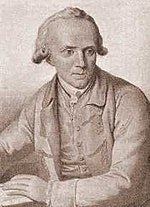Nationality Swiss Books Onanism Fields Medicine | Role Physician Name Samuel-Auguste Tissot | |
 | ||
Died June 13, 1797, Lausanne, Switzerland | ||
Samuel auguste tissot top 6 facts
Samuel Auguste André David Tissot ([tiso]; 20 March 1728 – 13 June 1797) was a notable 18th-century Swiss physician.
Contents
Life
A well reputed Calvinist Protestant neurologist, physician, professor and Vatican adviser who practiced in the Swiss city of Lausanne. He wrote on the diseases of the poor, on masturbation, on the diseases of the men of letters and of rich people, and nervous diseases.
He devoted an 83-page chapter to the study of migraine in his Traité des nerfs et de leurs maladies (Treatise on the nerves and nervous disorders). He used his own observations and the existing medical treatises of the day. His work is considered by modern doctors as a basis for "future generations of doctors." He is also recognized as "the classical authority on migraine."
In 1760, he published L'Onanisme, his own comprehensive medical treatise on the purported ill-effects of masturbation. Citing case studies of young male masturbators amongst his patients in Lausanne as basis for his reasoning, Tissot argued that semen was an "essential oil" and "stimulus" that, when lost from the body in great amounts, would cause "a perceptible reduction of strength, of memory and even of reason; blurred vision, all the nervous disorders, all types of gout and rheumatism, weakening of the organs of generation, blood in the urine, disturbance of the appetite, headaches and a great number of other disorders."
His treatise was presented as a scholarly, scientific work in a time when experimental physiology was practically nonexistent. The authority with which the work was subsequently treated — Tissot's arguments were even acknowledged and echoed by luminaries such as Kant and Voltaire — arguably turned the perception of masturbation in Western medicine over the next two centuries into that of a debilitating illness.
Tissot's most famous work in his lifetime was Avis au peuple sur sa santé (1761), arguably the greatest medical best-seller of the eighteenth century.
On 1 April 1787, Napoleon Bonaparte wrote to Dr. Tissot complimenting him for spending his “days in treating humanity” noting that his “reputation has reached even into the mountains of Corsica” and describing “the respect I have for your works…"
